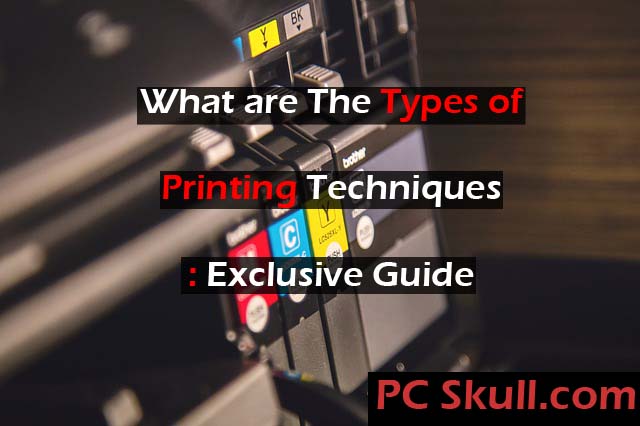What are the Types of Printing Techniques | Exclusive Guide
Johannes Gutenberg invented the printing press around the year 1440, which lead to the Printing Revolution. In this post let’s see, what are the types of printing techniques.
Printing then acted as an agent of change through every society it reached, for it enabled a wide circulation of ideas and information.
Printing techniques, however, have changed in the previous and current centuries. It has become cheap, easily accessible, and user-friendly.
There are many different types of printing techniques nowadays. And they differ in accuracy, speed, quantity, and quality.
What are the Types of Printing Techniques:
- Digital Printing
- Engraving
- Thermography
- Inkjet
- Foil Stamping
- Silk Lamination
The famous American abolitionist, Wendell Phillips, once said:
What gunpowder did for war, the printing press has done for the mind.
So here question is,
What are the Types of Printing?
Let’s check one by one.
Table of Contents
1. Digital Printing
Digital printing is the most favored by the common user. It is one of the most popular types of printing techniques of today. It has a wide array of functions and excels at both quality and speed.
The digital print process does not require much manpower, and it does not include the use of plates. These printing machines use toner cartridges. And possibly the only setback it has is that the colors can sometimes tend to differ from the ones on the computer monitor.
It is also expensive, due to high-quality print, ink, and paper.
2. Engraving
The printing process that consumes a lot of time is undeniably one of the most expensive printing techniques. It is used for printing expensive material, such as top-notch business cards, or deluxe invitations.
The process begins with the image being carved onto a metal plate, after which the spaces on the engraved image are filled with ink. Then, the thick paper gets pressed on top of the plate, and the printing is finished.
This Engraving technique is used for printing documents and books in braille, for people who are visually impaired.
3. Thermography
The end printing product of thermography printing is similar to engraving. However, the process for attaining the effect is different.
The process uses ink that is to be printed on the paper but with an addition of special powder.
When the printed piece is heated, the ink and powder mixture dries and results in a raised effect.
4. Inkjet
Inkjet printing is user-friendly and affordable. So it is common in many households. All you need is a computer and a printer loaded with printer ink.
The printer places extremely small droplets or dots of ink onto paper. Thus, it is good for creating an image. The droplets, smaller than the diameter of a human hair, are positioned very precisely.
Inkjet printers are not designed for use based on quantity but are popular because are easy to use.
You may like to Read: How to Record Screen in Windows using Problem Steps Recorder?
5. Foil Stamping
This is not that of a complicated process. A pigmented or metallic foil layer gets affixed to a particular material by a heating process.
This process is done in order to get the gold or silver stamp. Tradition foils are metallic silver and gold but come in various finishes and colors.
The metallic ones add an eye-catching, brilliant shine. This is what makes them so popular.
6. Silk Lamination
This printing process is popular for its silk-like, soft finish. It is tear-resistant and water-resistant, with pieces usually printed in full color.
But unlike printing any regular material, the additional step in silk lamination is coating the printed material. This coating is done with a weather-resistant, durable, silk laminate finish.
Lamination can be a film or a liquid that dries to a dull surface. It gives a sheen or glossy effect to a surface, and also protects it.
Read this: Top 5 Best Video Editing Software
We have seen, what are the types of printing techniques. The 21st century offers us many types of printing techniques and printers.
Even though nowadays everything gets digitalized, printing materials such as books, business cards, invitations, prospects, and advertising material will always be required and sought for. It all depends on one’s needs and budget.

